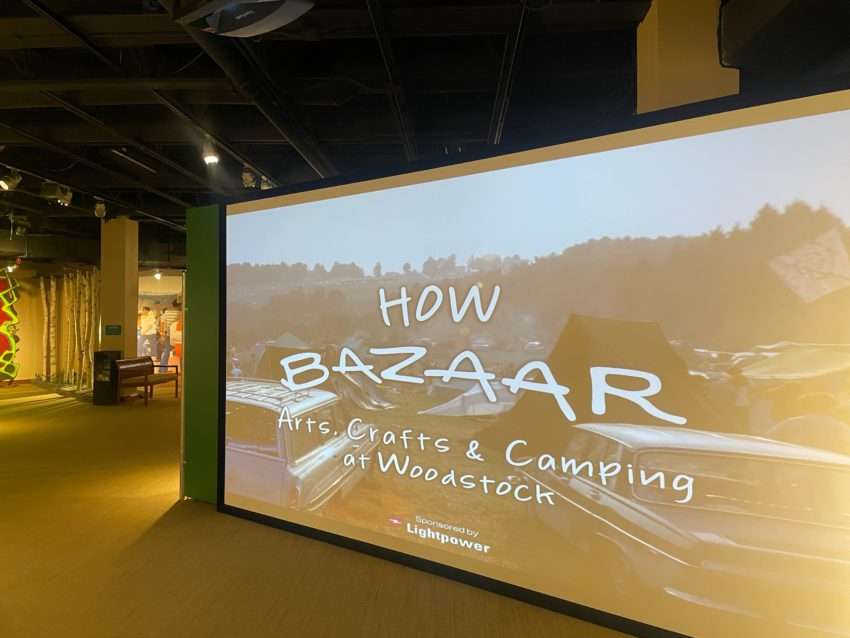Tucked away on the east and west sides of the 1969 Woodstock Festival site was a lesser-known, but vital, part of that iconic weekend: the Bindy Bazaar.
While most people picture the massive stage, sprawling hillside crowds, and rain-soaked rock legends, the Bindy Bazaar was its own vibrant universe. This wooded trail network connected different parts of the festival grounds and opened into a crafts bazaar where counterculture vendors sold handmade jewelry, leather goods, clothing, and other keepsakes. It was also a place where festival-goers could step away from the main stage, unwind, trade goods, and soak in the communal spirit that defined Woodstock.
Today, that free-spirited marketplace lives on as part of the Museum at Bethel Woods. The How Bazaar exhibit brings the Bindy Bazaar’s story to life, featuring artifacts, photographs, and immersive displays that capture the artistry and eccentric energy of the space. Visitors can see original vendor signs, browse period clothing and crafts, and learn about the bazaar’s role in shaping the festival experience.
As part of Radio Catskill’s Week of Woodstock celebrations, Kimberly Izar visited the How Bazaar exhibit — and found it to be just as colorful and eclectic as its name suggests. Her report explores how the museum has preserved the Bindy Bazaar’s playful, rebellious spirit while honoring its significance as a meeting place, trading post, and cultural crossroads of the 1969 festival.
From its winding trails to its handmade treasures, the Bindy Bazaar remains a reminder that Woodstock wasn’t just about the music — it was about connection, creativity, and community.

